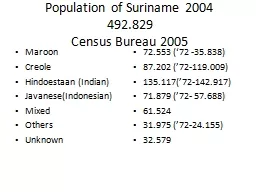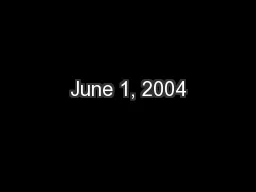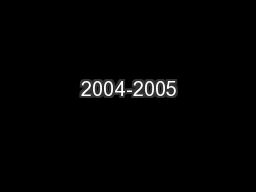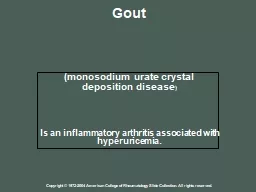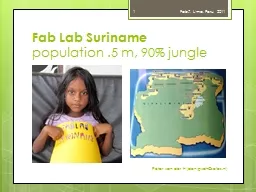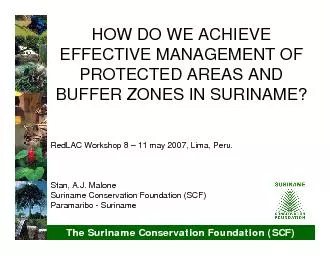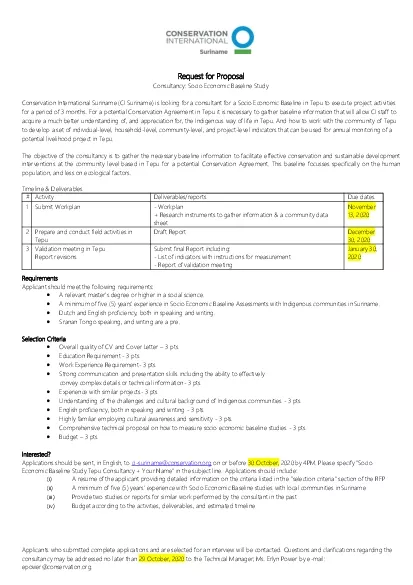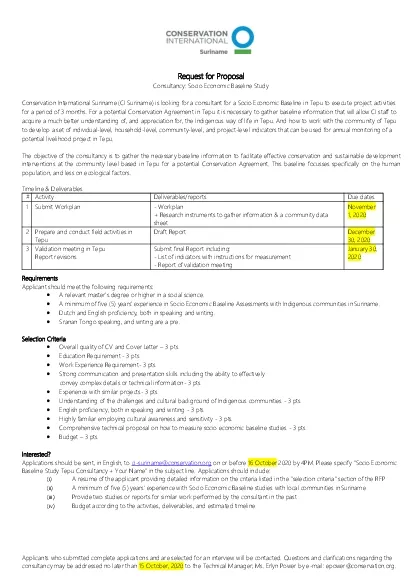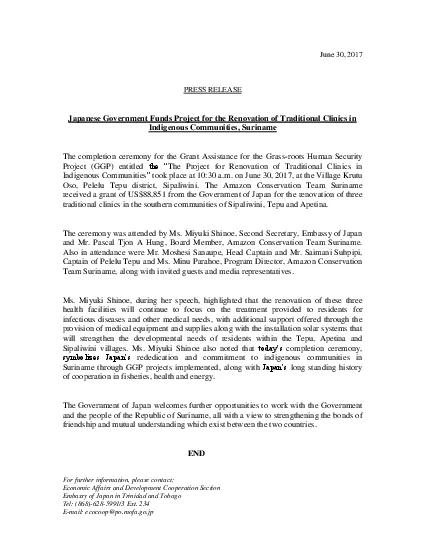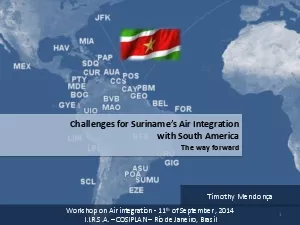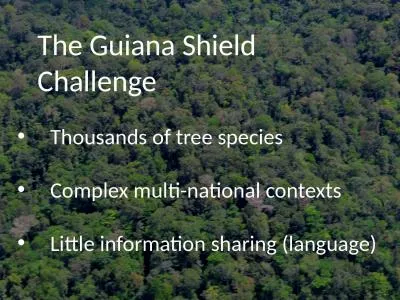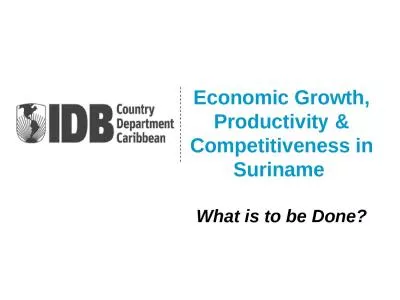PPT-Population of Suriname 2004
Author : celsa-spraggs | Published Date : 2017-05-16
492829 Census Bureau 2005 Maroon Creole Hindoestaan Indian JavaneseIndonesian Mixed Others Unknown 72553 72 35838 87202 72119009 13511772142917 71879 72 57688
Presentation Embed Code
Download Presentation
Download Presentation The PPT/PDF document "Population of Suriname 2004" is the property of its rightful owner. Permission is granted to download and print the materials on this website for personal, non-commercial use only, and to display it on your personal computer provided you do not modify the materials and that you retain all copyright notices contained in the materials. By downloading content from our website, you accept the terms of this agreement.
Population of Suriname 2004: Transcript
Download Rules Of Document
"Population of Suriname 2004"The content belongs to its owner. You may download and print it for personal use, without modification, and keep all copyright notices. By downloading, you agree to these terms.
Related Documents

